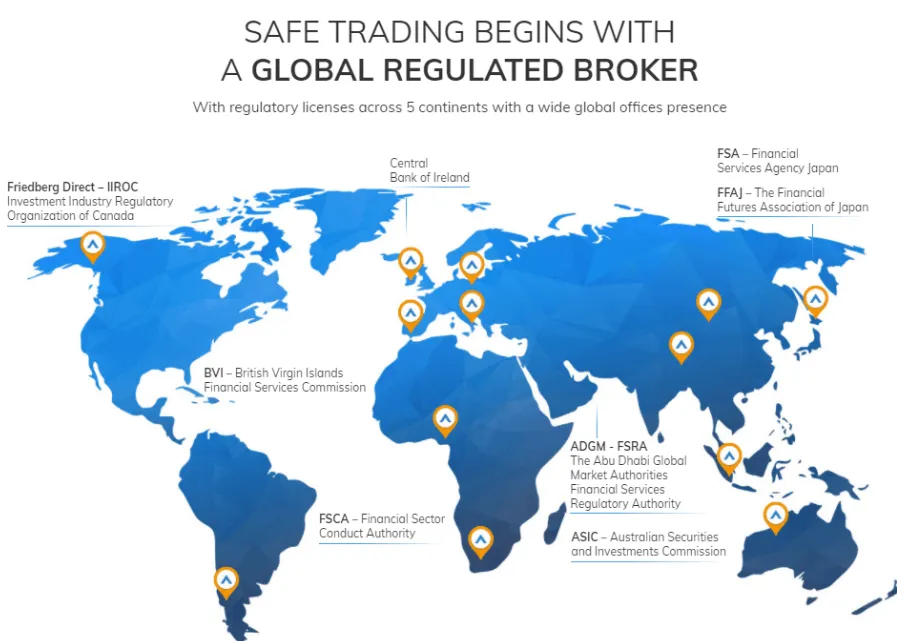 BrokerHiveX
BrokerHiveX BrokerHiveX
BrokerHiveX BrokerHiveX
BrokerHiveXSummary:Understand how leverage works in CFD trading, regulatory restrictions, and how to choose the right leverage level and manage risk.

Leverage in Contracts for Difference (CFD) trading is a core factor in determining the opportunities and risks of modern trading. Simply put, leverage allows traders to control market positions far larger than their principal with a relatively small initial deposit. This "amplifier" effect is a double-edged sword: it can magnify profits but also accelerate losses.
According to data released by the UK's Financial Conduct Authority (FCA) in 2024, approximately 74%-89% of retail CFD traders lose money. This alarming data highlights the importance of fully understanding how leverage works before trading. Regulators around the world have imposed strict leverage limits to protect retail investors.
This guide, powered by original BrokerHivex research and expert insights, is designed to help you:
Understand the working mechanism of CFD leverage and margin
Comparing leverage limits across assets and regions
Choose the leverage level that suits your trading style and risk tolerance
Establish a robust risk management strategy
Risk Warning: CFDs are a high-risk financial instrument and can lose money rapidly due to leverage. Please ensure you understand how CFDs work and whether you can afford to take the high risk of losing your money (Source: BestBrokers.com ).
Leverage is the market exposure you can control with a certain amount of capital. The higher the leverage, the less margin you need, but the greater the risk.
Calculation formula:保证金=(交易规模× 市场价格)÷ 杠杆倍数
Example:
If you want to control a $10,000 EUR/USD position with 10:1 leverage:
Required margin = $10,000 ÷ 10 = $1,000
BrokerHivex Tips:
While high leverage can lower entry costs, it significantly increases your risk exposure. When the market moves against you, your losses will be magnified relative to your initial margin [Source: MarketMates].
| Asset Class | Usually leverage | Volatility risk |
|---|---|---|
| Major foreign exchange (such as EUR/USD) | 30:1 | Medium-low |
| Minor FX/Stock Indices | 20:1 | middle |
| Commodities (excluding gold) | 10:1 | Medium-High |
| Stocks/ETFs | 5:1 | Medium-High |
| Cryptocurrency | 2:1 | Very high |
Data sources: NAGA Academy, BestBrokers.com
Trading Object: GlaxoSmithKline (GSK) CFD
Position size: £10,000
Market Change: Share price increased from £23.50 to £24.80
Leverage comparison: 5:1 vs. 30:1
| Leverage | Margin requirements | Net profit (after costs) |
|---|---|---|
| 5:1 | £2,000 | £500.88 |
| 30:1 | £333.33 | £500.88 |
Key points: With the same profit, high leverage can reduce initial investment, but once losses occur, they may quickly exceed the margin limit [Source: Investopedia].

Regulators in different regions set different leverage limits based on risk appetite to prevent retail investors from suffering significant losses:
| Region/Regulator | Forex Leverage | Professional Account | Cryptocurrency Leverage | Regulatory agencies |
|---|---|---|---|---|
| EU/UK | 30:1 | 500:1 | 2:1 | ESMA/FCA |
| Australia | 30:1 | 500:1 | 2:1 | ASIC |
| USA | 50:1 (Forex only) | not applicable | prohibit | CFTC/NFA |
| South Africa | 200:1 | N/A | 10:1 | FSCA |
| Switzerland | 100:1 | N/A | 5:1 | FINMA |
| Seychelles/Offshore | No restrictions | No restrictions | No restrictions | FSA (Seychelles) |
Data source: LiquidityFinder, BestBrokers.com
Regulators such as ESMA and the FCA began restricting leverage after events such as the 2015 Swiss Franc Crisis to prevent retail investors from being liquidated due to drastic market fluctuations.
Research shows that leverage restrictions can:
Reduce extreme price fluctuations
Improve market stability
Reduce the probability of loss for high-risk retail investors
Introduction Quote:
“Leverage restrictions significantly reduce the risk of losses for aggressive traders without affecting market liquidity.”
LiquidityFinder
Even within the same regulatory jurisdiction, the leverage offered by different brokers can vary:
Pepperstone: Offers leverage up to 30:1 for retail clients in the EU/Australia, and up to 500:1 for professional or offshore clients
Interactive Brokers: Up to 30:1 for major forex, 2:1 for cryptocurrencies, adjusted dynamically based on account type and assets [Source: BrokerChooser]
BrokerHivex Rating Insights:
“ASIC-regulated brokers score higher on leverage transparency and client protection.”
The leverage you choose should be based on your risk appetite, trading strategy, and account size. There is no "universal leverage," only the level that works best for you.
Consider the following elements:
Risk tolerance: How much loss can you accept on each trade?
Account size: The more funds you have, the stronger your ability to withstand pressure
Trading strategy: high-frequency traders tend to use low leverage, while swing traders can increase leverage moderately
Example:
With a $5,000 account, I primarily day trade forex pairs, using a 10:1 leverage ratio. [Source: FXEmpire]
| Trading style | Recommended leverage | reason |
|---|---|---|
| High-Frequency Trading | 5:1 – 10:1 | High frequency and low profit, risk control is necessary |
| Swing Trading | 20:1 – 30:1 | Medium-term holding, greater space |
| Hedging | 1:1 – 3:1 | Risk hedging requires low leverage |
Source: NAGA Academy, BestBrokers.com
Using high leverage during major news events can easily lead to margin calls
Ignoring margin calls
Misjudging asset volatility and using inappropriate leverage (e.g. crypto)
BrokerHiveX data:
“80% of margin calls occur when leverage exceeds 50:1.”
Stop-loss order: preset loss level, automatic stop-loss
Negative Balance Protection: Ensures that losses do not exceed the account balance
Position Calculator: Allocate positions reasonably to avoid overexposure
Expert advice quote:
“Effective risk management includes reasonable position allocation, setting stop-loss orders, and continuously monitoring account margin.”
——NAGA Academy
A margin call occurs when the account's equity falls below the required margin. If you do not replenish or close your position in time, the broker will force a stop-loss.
Ways to avoid:
Use conservative leverage (e.g. ≤10:1)
Daily monitoring of margin levels
All trades have stop-loss orders
BrokerHiveX data reminder:
“80% of margin calls come from accounts using leverage exceeding 50:1.”
“Leverage is a magnifying glass—it reveals opportunity but also exposes recklessness.”
— John Smith, BrokerHiveX 2024 Top Analyst
✔ Leverage can magnify both profits and losses ✔ Choosing the right leverage requires a full understanding of its risks ✔ Regulatory leverage limits vary across regions and asset classes ✔ Risk management is essential (stop-loss, negative protection, position control)
✔ Please check the broker's leverage policy and regulatory requirements before trading.
This article is provided by BrokerHiveX , which specializes in broker ratings, regulatory information, and professional trading education. For more of the latest financial news and expert analysis, please visit our website.
BrokerHivex is a financial media platform that displays information sourced from the public internet or uploaded by users. BrokerHivex does not endorse any trading platform or instrument. We are not responsible for any trading disputes or losses arising from the use of this information. Please note that the information displayed on the platform may be delayed, and users should independently verify its accuracy.